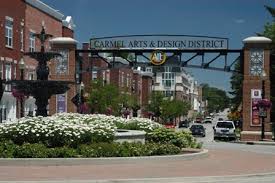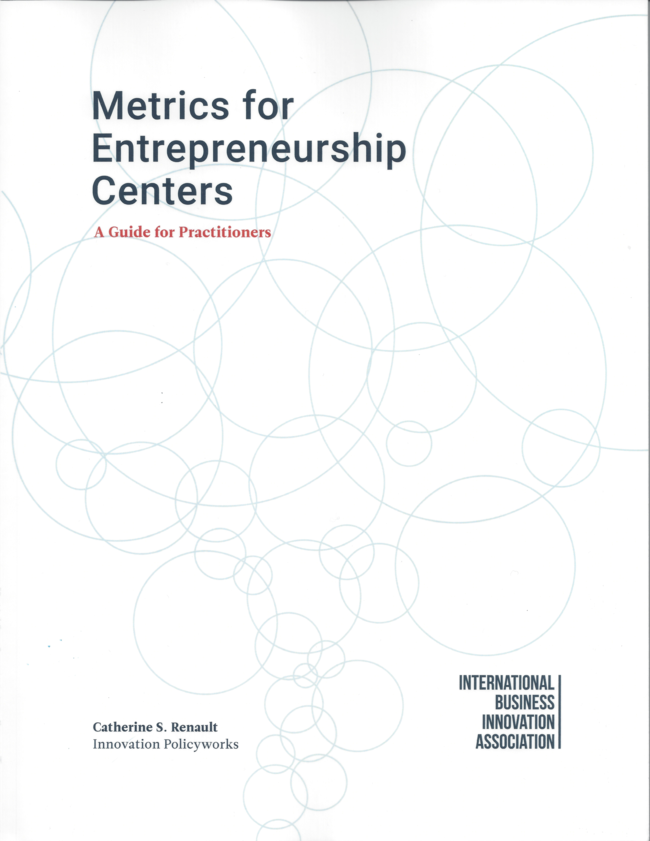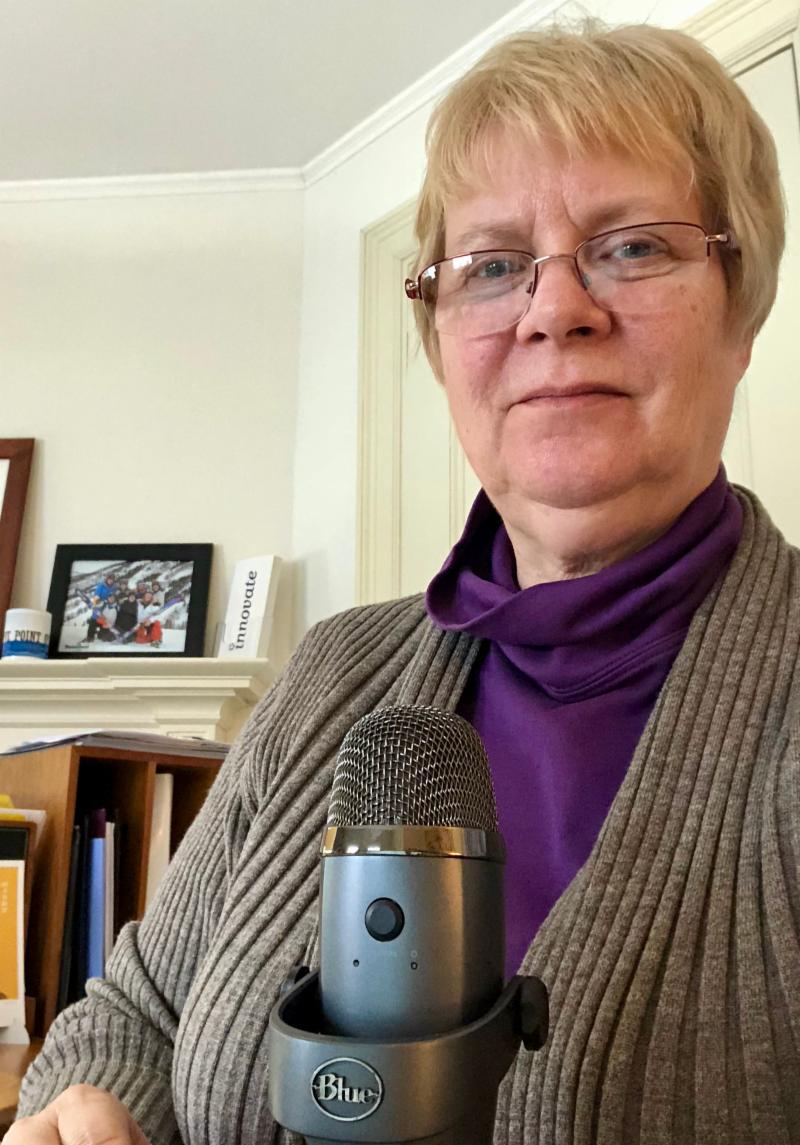|
|
|
Notes from Innovation Policyworks

Amazing! The
Portland Press Herald, our local newspaper, actually had an editorial this week that said that innovation and entrepreneurship was the key to economic growth in Maine! Now this isn't a radical statement at all. (See note below about the 2018 Nobel Prize in Economics that was awarded to the researcher who first articulated what's called New Growth Theory.) What's amazing is to hear this nuanced statement from the media! The
PPH was writing about a local company, Howe and Howe, that is being bought by a large conglomerate, Textron. Howe and Howe is a defense contractor that has developed several innovative projects, like a remote-controlled tank, based on government-funded R&D. The company is 13 years old, and has grown organically to 50 employees, a success story by any standards.
Two things surprised me about the editorial. One, the paper didn't call this a small business. Rather, they did distinguish between Main Street businesses and an innovation-based business like Howe and Howe. Second, they didn't cry about this exit taking money out of Maine. Many local companies get acquired by large companies from "away;" (there aren't very many large companies in Maine that aren't from "away.") After all, when local entrepreneurs have their success validated and monetized, they and their workers have the opportunity to reinvest in the local economy, whether the company stays local or not. In most cases, the companies do stay local because the quality of Maine workers and the cost of doing business here are both very competitive.
All of this points to the great value of local success stories. They inspire local entrepreneurs, and also put a place on the map in the broader context. So, congrats to Howe and Howe and the many other Maine entrepreneurs who have had exits this year.
Cathy
|
Undeniable Link between Educational Attainment and Community Prosperity
College education levels are the best predictor of community well-being. What does this mean for economic development policies?
The Economic Innovation Group, a Washington DC-based policy and advocacy organization, created a Distressed Community Index to divide the US zip codes into five categories: prosperous, comfortable, mid-tier, at risk and distressed. According to their analysis, employment and business establishment growth 2007-2016 has been mostly limited to prosperous communities. Economic distress has become overwhelmingly rural, illustrating that the structural challenges facing the economy are still significant. Read more
HERE.
The why of this link between education and prosperity is illustrated in research recently released by the Georgetown University Center on Education and the Workforce. They found that:
- Since 1991, good job opportunities (defined as paying at least $35,000) declined by 1.8 million jobs for high school graduates, grew by 3.5 million for middle-skills and by 18.2 million for BA grads.
- More than 20 million new good jobs were created in skilled services, while net good jobs in blue-collar industries slightly declined.
- Blue collar industries added 800,000 good middle-skilled jobs and 500,000 good jobs for workers with a BA or higher.
See the Georgetown study
HERE.
All of this lays the groundwork for an interesting question. Should interventions to reduce this inequality be at the individual level or place-based? A book from Brookings argues for place-based policies. Alarmed at increasing inequality across the country, the researchers looked at place-based policies that work and those that have failed. The recommended strategies include subsidizing employment in areas of extreme poverty to revitalize communities, provide more aid to states with limited fiscal resources and even an expansion of the Manufacturing Extension Partnership. See the whole Brooking report
HERE.
|
Romer Awarded 2018 Nobel Prize for Economics
Paul Romer is the economist whose research first articulated the role of knowledge and innovation in economic growth in the mid-1980s.
When most classical economists were talking about labor and capital, Romer added knowledge and technology to the equation (literally!) This month he was awarded the 2018 Nobel Prize for Economics.
Romer talks about how knowledge builds on itself, so it's a continually expanding resource, unlike other resources that are characterized by scarcity. This means that the information or knowledge economy is different. While returns diminish in the physical economy, they increase in the knowledge economy.
Read the whole interview with Romer
HERE.
|
It's not the first time that a research institution's relationship with a startup has drawn attention because it was a huge success.
Many, many universities and other sources of R&D regularly take equity in startups that are based on their intellectual property. It's a strategy designed to get new knowledge out into the marketplace, rather than sit in a laboratory. But when the startup suddenly does spectacularly well, and the institution ends up with a lot of cash as the result of a liquidity event, people take notice and start to question the whole concept. And, sometimes relationships that are not properly disclosed create problems.
The latest example is an artificial intelligence startup started by three researchers at Memorial Sloan Kettering Cancer Center. The company has an exclusive deal with Sloan Kettering for access to patient tissue slides. When the company launched with $25 million in venture capital, an uproar ensued. The issue was the conflict of interest between certain members of the company and their "day jobs" at Sloan. By not disclosing, the principals, including the Sloan Chief Medical Officer, opened themselves up to questions about the value of the patient data, and how it was obtained. This unfortunate situation sets back the whole enterprise of commercializing research technology. Read the
New York Times article
HERE.
|
 Carmel, IN: A New Model for Aspirational Suburbs?
Carmel is reinventing itself, but with public debt. Will it pay off?
Last Spring, while working on a great project for AgriNovus Indiana, we visited Launch Fishers, a coworking space just north of Indianapolis. Fishers, and its neighbor, Carmel, are "inner" suburbs that are in the process of reinventing themselves. Carmel has done it by investing in infrastructure like all new roads and roundabouts throughout town in order to offer a level of amenities that will attract and keep high end residents and businesses. Similarly, Fishers has a renovated and modern downtown and a nearby office park, including the coworking space. The challenge is that all this investment has led to high levels of public debt. Will it pay off? Listen to this
podcast about the Carmel experiment.
|
Why Big Corporations Are So Bad at Innovation
Working more closely with startups could overcome this obstacle.
Wal van Lierop's piece in Forbes highlights three "antibodies" that big corporations have that make it difficult for innovations to see the light of day. Instead, van Lierop argues that big corporations should create a mechanism to source breakthrough technologies from startups. The antibodies are:
1.
See only the downside of innovation risks; not the upsides;
2.
Protect the jobs, power structures and processes of entrenched employees; and
3.
Resist divergent, weird people who spot icebergs and offer solutions (aka startup founders).
If big industrial corporations can inject capital into startups at well defined stages, such as pilots and demonstration plants, then both entities can succeed. Read more
HERE.
|
|
Top US Biopharma Clusters
The rich get richer (see increasing returns from innovation, above), with the same handful of cities experiencing increasingly concentrated resources in higher education, R&D and venture capital.
The top 10 for 2018 are:
10. Chicagoland
9. Seattle
8. Raleigh-Durham, NC
7. Los Angeles/Orange County, CA
6. Greater Philadelphia, PA
5. San Diego, CA
4. Capital Region (MD/VA/DC)
3. New York/New Jersey
2. San Francisco Bay area, CA
1. Boston/Cambridge, MA.
Austin, TX, Pittsburgh, PA and Denver, CO are just below this list. See the whole list HERE.
|
Latin America Opens its Doors for Entrepreneurs and Investors
As the US has become more hostile to immigration, countries in Latin America are taking extra steps to attract foreign talent.
Many countries have debuted tech or investor visas to bring skilled entrepreneurs, developers and investors to help develop their local innovation and tech ecosystems. These visas are often expedited, some can be granted as fast as two weeks. Read about specific programs in Mexico, Colombia and Chile
HERE
.
|
|
| |
|
Lin-Manuel Miranda
from Hamilton
|
|
Innovation Spark of the Month

EasyJet, a budget airline, has added a feature to its app that allows customers to upload an image and the airline will interpret the image and enable the user to book a flight to the nearest airport. This is an example of a new trend where consumers can access information from images instead of text.
Trend-Watching asks:
So, which new mediums could be innovative and convenient channels to engage your customers?
|
New Incentives: Opportunity Zones
Opportunity Zones still ambiguous
The US Treasury recently released new guidance about Opportunity Zones that left many questions unanswered, especially about the possibility of seed and venture capital funds based in the Zones. However, even though the purpose of the Zones is to drive investment into operating businesses in underserved areas, Treasury seems "unwilling or unable" to maximize the program's ability to work with existing equity investment models.
Novogradac and Co. has published a summary of the new guidelines.
|
Brown Unveils Plan for RI Economic Development
New strategic plan to promote innovation, jobs and entrepreneurs.
Like many other large, prestigious private universities, Brown has often appeared to be distant from its local community and focused beyond its regional economy. A team led by Brown Provost Richard Locke announced a strategic plan last summer to create "a higher impact on the local economy in a way that would promote innovation, job creation and entrepreneurship." Brown's umbrella program, The Innovation Economy Initiative, includes efforts to support university entrepreneurs, to commercialize university intellectual property, and to support non-university innovators as well. Read
MORE.
|
|
Quick Links
Maine's Knowledge Economy: A Snapshot 2017
(2018 report coming in January)
|
Metrics for Entrepreneurship Programs
 Have you been wondering how to convince your stakeholders that your program is performing well? My book on evaluating entrepreneurial programs, written for the International Business Innovation Association (iNBIA), is available on its website. The basics apply to any economic development program. Check it out HERE. Have you been wondering how to convince your stakeholders that your program is performing well? My book on evaluating entrepreneurial programs, written for the International Business Innovation Association (iNBIA), is available on its website. The basics apply to any economic development program. Check it out HERE.
|
|
Online Course In the Works
 New to innovation-based economic development? Want to create your own plan? Want to know the basics, but at your own pace, without travel? New to innovation-based economic development? Want to create your own plan? Want to know the basics, but at your own pace, without travel?
Coming 1Q19, an online course you can take at your desk, on your own timetable, hosted by Cathy Renault, a 30+ year veteran in innovation-based economic development. Email her to be the first to learn more.
|
|
|